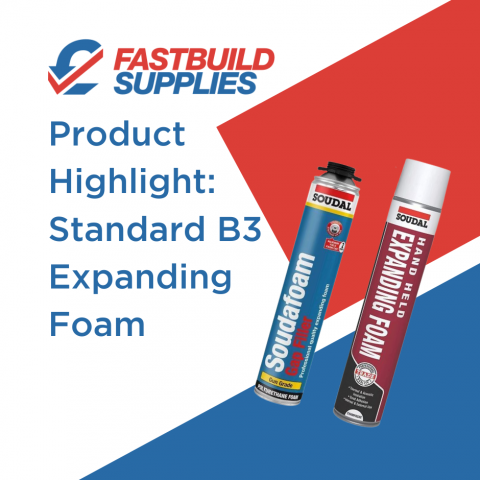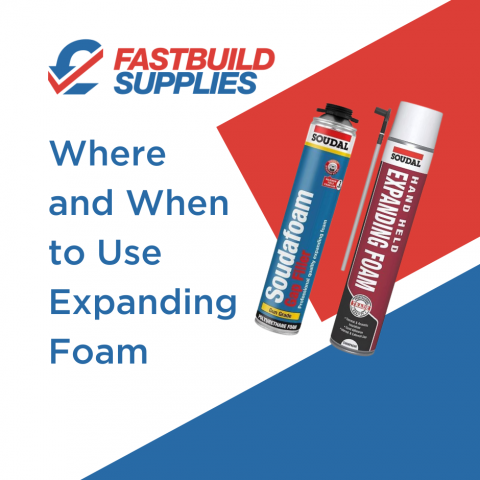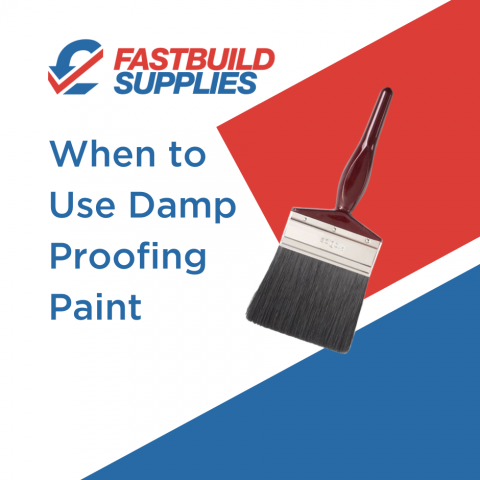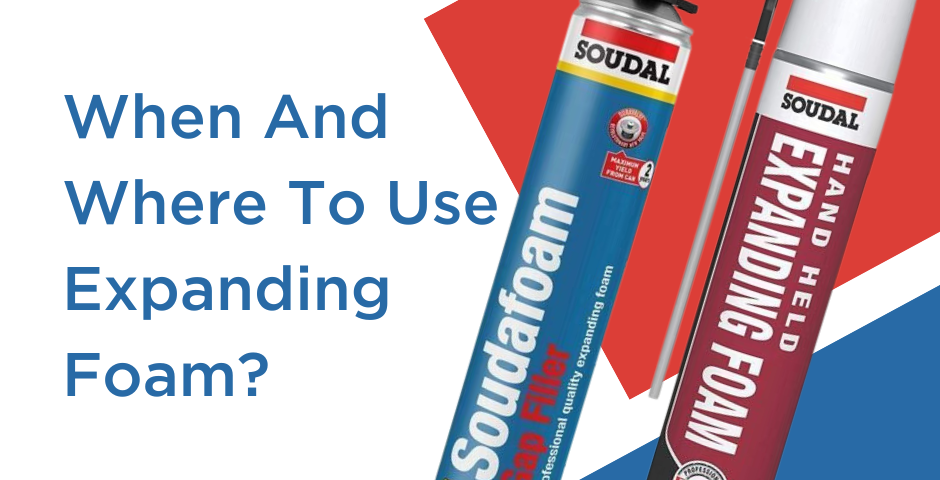
Expanding foam is a hugely valuable tool for contractors with many potential uses. Primarily, it is great for closing gaps and helping to improve insulation in buildings.
Here at Fastbuild, we sell a range of building supplies in the UK, including expanding foam. Here, we look at its various possible uses to help you on your next job.
What is Expanding Foam?
Expanding foam is a substance made up of various chemicals, including polyurethane. It usually comes in a can, which is either:
- Gun grade expanding foam - to be used with a foam gun
- Handheld - comes with its disposable nozzle
As its name suggests, the chemical compound comes out of the can as a foam and then creates a reaction, causing the compound to expand. Some expanding foams can expand up to 30-60 times their liquid volume, although do check with the specifics of your product.
Types of Expanding Foam
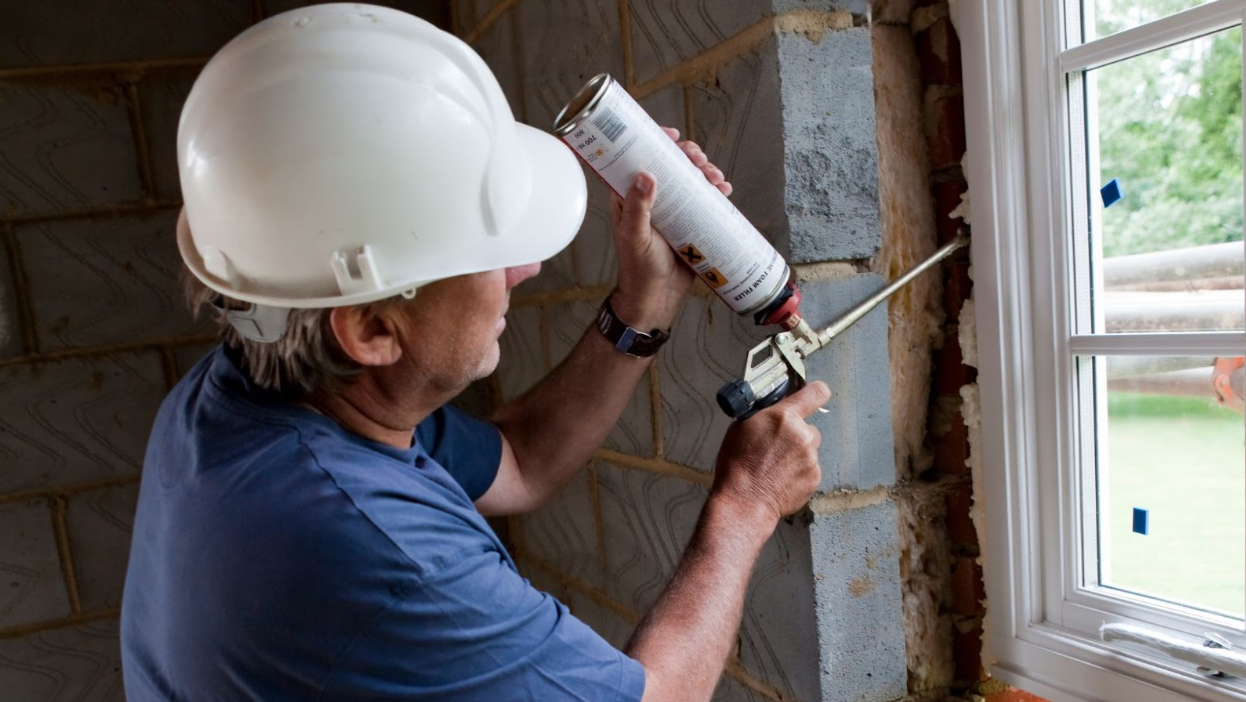
Standard B3 expanding foam is the most common type of expanding foam. There are other types of foam on the market which act in similar ways but have different properties. An example is firestop - FR or B1 foam - fire-rated expanding foam.
When choosing an expanding foam, ensure you have the right product for your job.
When To Use Expanding Foam?
Expanding foam is a hugely versatile product that is incredibly useful for construction. Here are some of the circumstances where expanding foam should be considered.
Filling Gaps
Buildings rely on a lot of large, solid components which can’t always connect fluidly. To ensure standards regarding insulation and moisture ingress are met, expanding foam can be used internally and externally to close small gaps.
Common instances where expanding foam could be used include:
- Gaps around the edges of walls
- Filling holes made for pipes
Window and Door Insulation
Insulation is hugely important for homeowners, keeping buildings warm during the winter while also reducing energy bills.
Windows and doors are often the primary culprits for heat loss. Expanding foam can be used to fill the gaps around window and door installations, helping to reduce heat loss in these areas and improve overall insulation.
Pipe Stabilising
Similar to windows and doors, plumbing is another feature that can leave small gaps. When installing plumbing, expanding foam can be used in holes to seal pipes in place, stopping any rattling.
Where Not to Use Expanding Foam
Expanding foam is not a miracle cure. While it is hugely useful, it should not be used to solve all problems.
One such example is electrical boxes. Expanding foam shouldn’t be used in these locations as it could cause jams that would be expensive to repair. So avoid using it around sockets or light fixtures, or any electrical components in the property.
Likewise, expanding foam shouldn’t be used for structural repairs, as expanding foam doesn’t have the strength for these kinds of jobs. If there are cracks in masonry, these may need helical stitching bars.
Is Expanding Foam Water Resistant?
The chemicals that make up expanding foam provide it with water-resistant properties, meaning that expanding foam is moisture resistant. Therefore, it assists in the illumination of dampness and prevents the formation of mould.
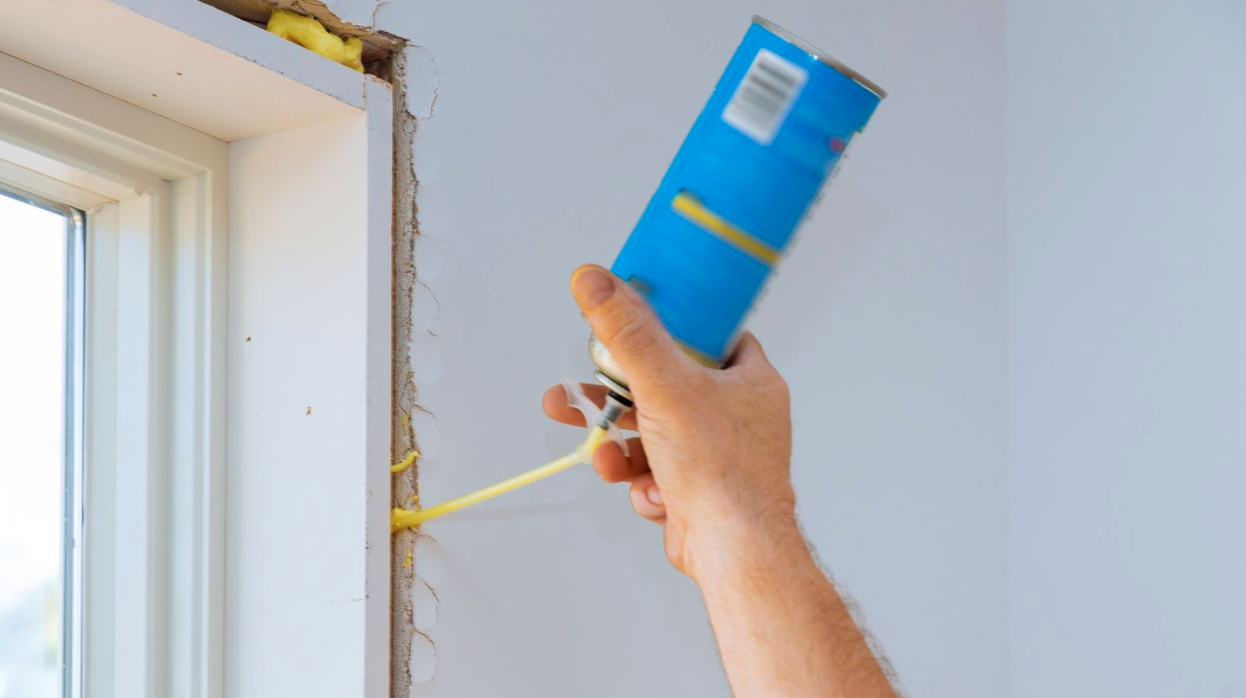
Can You Plaster Over Expanding Foam?
Yes, you can plaster over expanding foam. However, you will need to take a few extra steps to ensure the plaster adheres to the surface correctly. Although it may not provide as desirable a finish as plastering over a flat surface, such as plasterboard, for small areas or holes, it can be extremely useful.
Here at Fastbuild, we supply everything you need for your next job at unbeatable trade prices. Why not take a look at our range and see for yourself?


